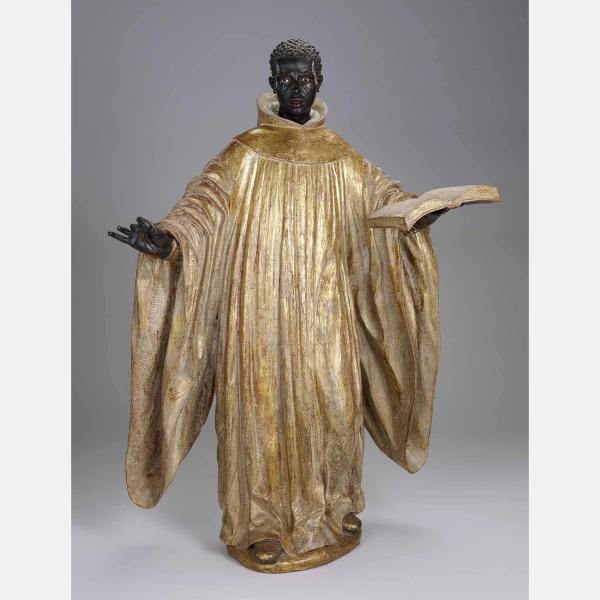Saint Benedict of Palermo
Artwork Details
- Title: Saint Benedict of Palermo
- Artist: Attributed to José Montes de Oca (Spanish, 1675–1750)
- Date: ca. 1734
- Medium: Polychrome and gilt wood, glass
- Dimensions: 49 × 34 5/8 × 16 1/2 in. (124.5 × 87.9 × 41.9 cm)
- Classification: Sculpture
- Credit Line: Minneapolis Institute of Art, The John R. Van Derlip Fund
- Curatorial Department: European Paintings
Audio

635. Saint Benedict of Palermo, Attributed to José Montes de Oca, Spanish, 1675-1750
ERIN ROWE: I've looked at dozens and dozens of sculptures of Benedict of Palermo. And this is really one of the most extraordinary of them all.
I'm Dr. Erin Rowe. I'm a professor of history at the Johns Hopkins University in Baltimore. I'm an expert in saints and the world of sanctity.
NARRATOR: This sculpture depicts St. Benedict of Palermo: the first and one of the most important Black saints canonized by the Catholic Church.
ERIN ROWE: He is standing with his arms outstretched. He's wearing the habit of the Franciscan Order, of which he was a member. Because he was a Black man, he was not permitted to be a full member, but images always represent him in his habit.
NARRATOR: The figure has a charismatic gaze and stance and is remarkably lifelike. An artist sculpted it from wood, and then used polychromy, a method of applying multiple layers of colored paint, to enliven its carved surfaces.
ERIN ROWE: One of the things that is unusual about this image is that he is holding a book in his hands. And we don’t see it very often, because he was illiterate. It suggests to me what we refer to as the miracle of infused wisdom. And that means that somebody without formal learning is infused by God with a deep theological understanding.
Spanish missionaries viewed it as a way of providing hope to enslaved Black Africans who were all forcibly baptized into Christianity. And this idea implicit in these images of Black saints for a Black audience would be: You too have the same spiritual capabilities and spiritual potential as any other baptized Christian.
Often when we talk about the history of Afro-Hispanic communities, we talk a lot about the slave trade, the economics of enslavement. We talk about racism and racialization. And those are all really important factors, but sometimes we miss the incredible richness of Afro-Hispanic culture. And this object gives us an opportunity to reflect on the complexity of that legacy.